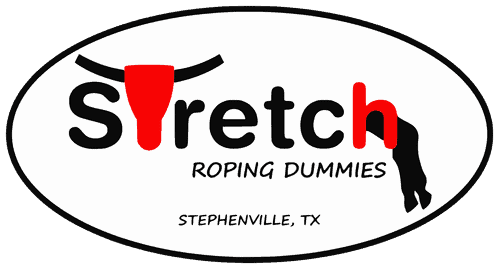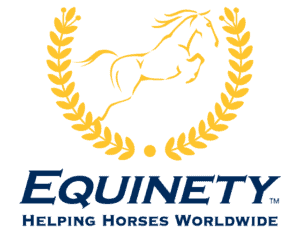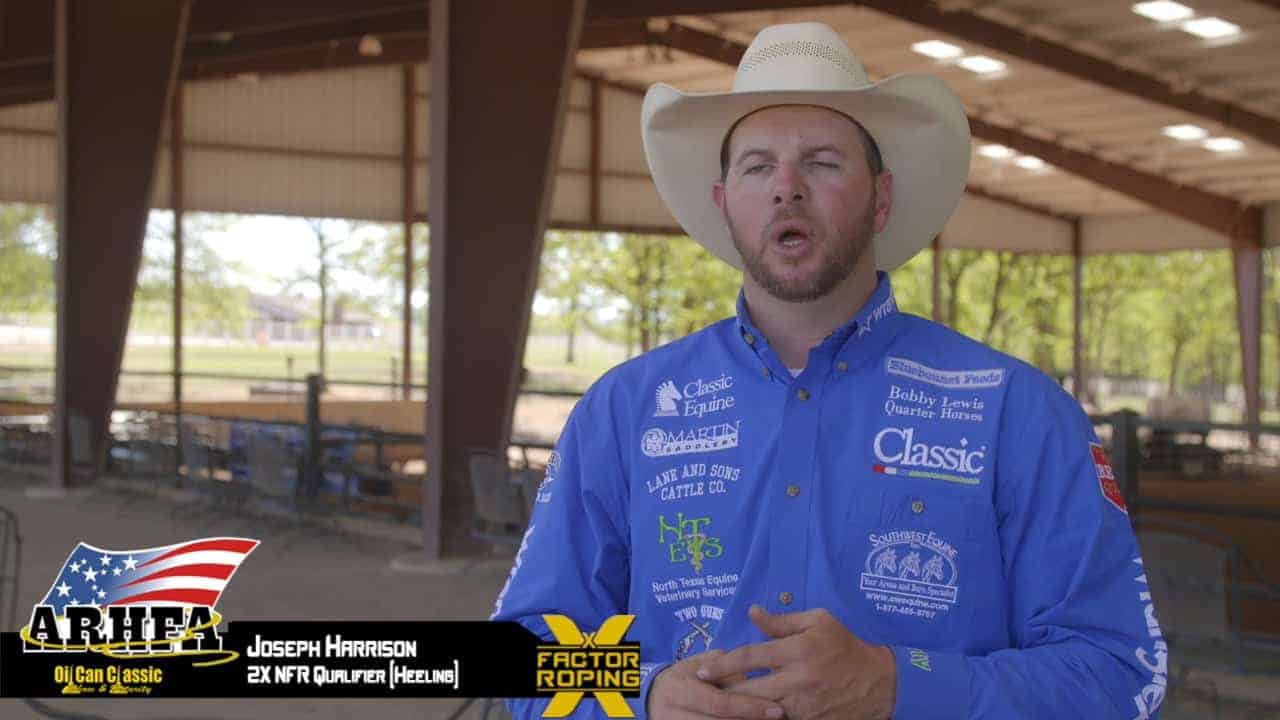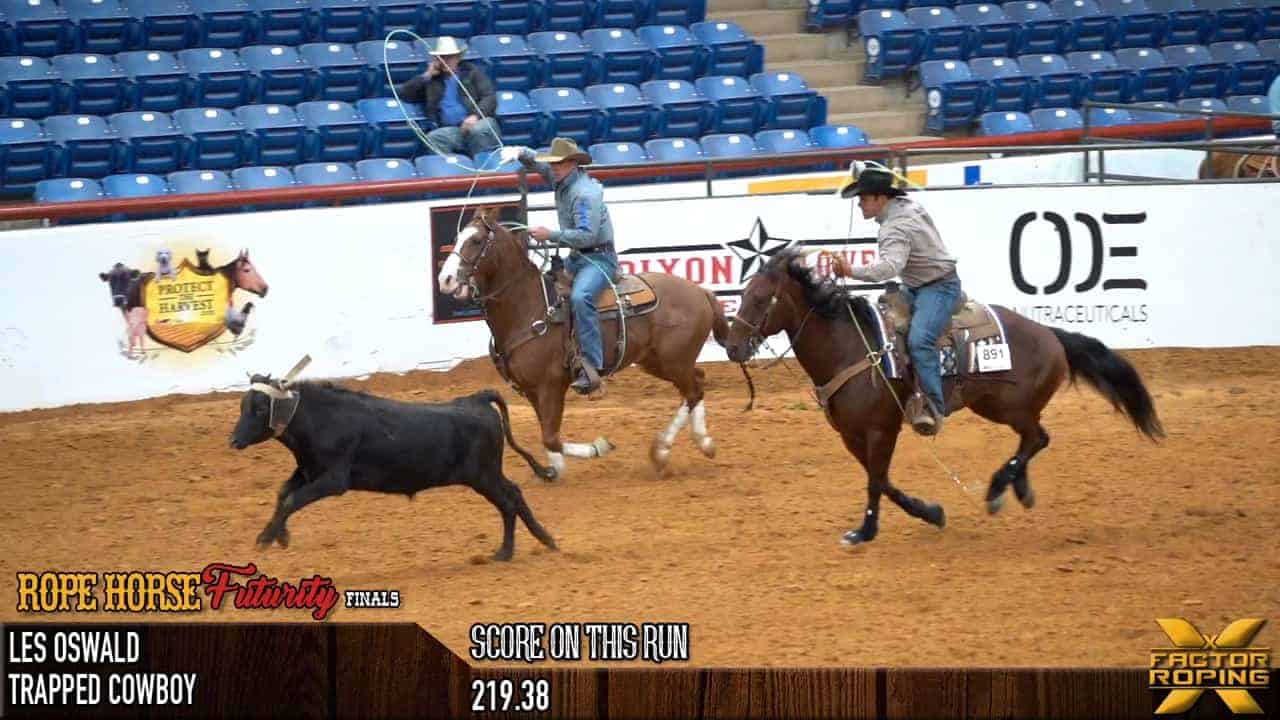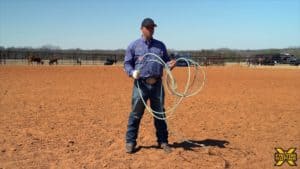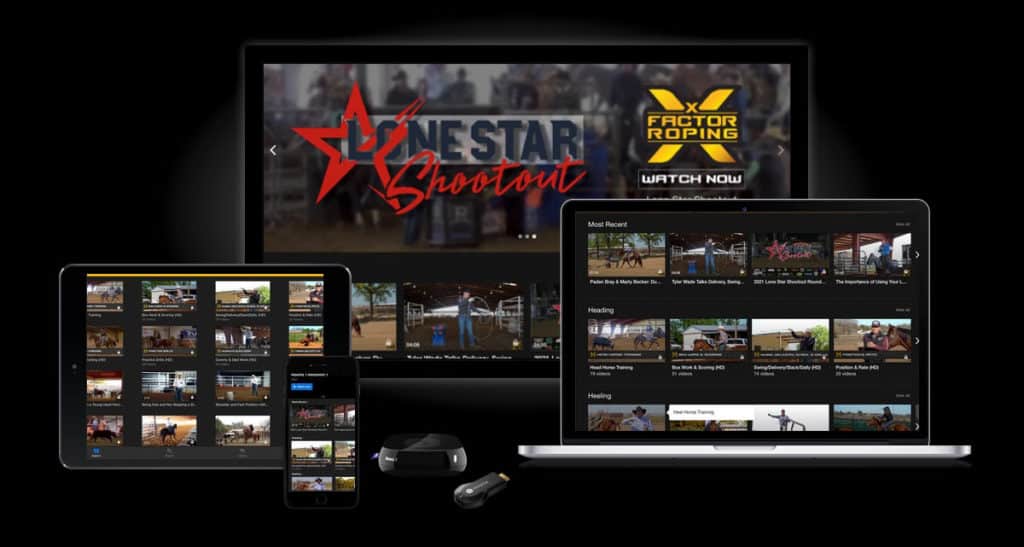Pace Freed: All right. Well, we’re going to go to this run here, because I think this one is… This steer kind of forces us into a full contact run. This steer’s pretty big, strong. Take me through this as far as what has to go into this run to set this one up so well? What do you thinks got to… Because I think you’re… What do you think about your horse, your rope, and then kind of that shot to make this happen.
Jake Long: Well, it’s the same thing. To get a shot on a steer like this, again, he’s pushing to the right, which in the practice pin, probably 90% of your steers are going to push to the right and they should push the right because if not, you’re going to wreck your practice heard. Again, this steer’s really pushing to the right. It’s going to make the corner happen a little bit slower, so I’m having to be patient.
Jake Long: I tried to step it up just a little bit more, because I spent the time trying to make sure my horses were working good. Well then, it hit a spot in the practice pen where… I’m up at Fort Worth tomorrow night, so I need to feel like I’m confident and I’m ahead of the steer and I’m ready to heel one fast at the rodeo if I need to. This was a good steer to try it on. We knew he was going to be fast. We knew he was going to be a challenge. If you go back to this angle, you’ll see… If you’ll back it up a little bit.
Pace Freed: Do you want this angle right here?
Jake Long: Yeah. I’ve seen a decent little jackpot start, or a rodeo start, I mean. Again, if you’ll pause it right there. I am higher than I was planning on getting. Again, I really don’t like to get much higher than that. Seeing these angles are good for me, and this is where video’s good if you can get somebody to video your practices. Because if you’d a asked me during the run, I don’t feel like my horse’s head is up here near the steer’s shoulder going down the arena. But, clearly it is because we’re sitting here looking at it.
Jake Long: A lot of times what we perceive during a run, good or bad, is sometimes not the correct thing. There’s been steers that maybe I feel like I’ve done a bad job on. Then you watch a video back and you’re like, “Man, that was a pretty good job. And, vice versa. There’s been steers where you’re like, “Man, I did a great job,” or pulled something off and you’re like, “Wasn’t that hard,” or whatever.
Jake Long: By me being up here high, it does help me get a round of create a faster shot. But the problem with getting up higher is, again, it limits your options. Now, where I’m going to be aggressive on this steer, pretty much regardless, because I’m working on a rodeo throw. It’s not as big a deal if you let yourself get a little too high. But if you’re… Let’s say you’re at a three head rodeo, if you’re at Dodge City or something, and you’re in the first round. Well, yeah, you’re wanting to be aggressive because it is a rodeo, but it’s also an average. If this steer were to take a bad hop or do something funny, I don’t want to necessarily be locked into having to throw fast. That’s where I would want to ride my position more down with my horse’s head around hip high, tail high.
Jake Long: By me being up here, it does make it easier. If you’ll go slow right here. It does make it easier for me to go around him. I don’t have to stay as patient. Okay. Pause it. Now, back to the same thing. Actually back it up just a little bit. That same thing we were talking about earlier, so the steer’s right there when he ends up turning. Now, go all the way back.
Pace Freed: Further back?
Jake Long: Yeah. Further back. Okay. If we’ll look… The marking deal, wasn’t going to work as much as I thought. But, if you’ll stop and look, you’ve already got the steer’s head bent and you can kind of see where this post is in the background right here. Every post is going to be 10 feet on the fence, right?
Pace Freed: Oh yeah. I set those posts. They’re exactly 10 feet. I guarantee you 10 feet.
Jake Long: On the dot. So, the biggest thing that people don’t realize is how far the steer travels down the arena before they actually turn. Okay? If you’ll go really, really slow. Now, you’ve already got the steer’s head bent. It’s not even that the head rope’s on. That’s 10 feet. That’s probably okay. It’s about 20 feet exactly before he actually ends the turn.
Jake Long: As a heeler, from the time you bent the steers head and the shoulders come around and the ribs come around, and the hips come around, this steer has traveled 20 feet down the arena. If right when you bend the head, if I go to reining my horse in, and my horse actually listens and doesn’t… Let’s say he doesn’t want to follow the cow at all and he just strictly listens to are cue. If that horse turned exactly when I told him to turn, the steer’s going to be 20 feet to the right of me by the time I’m trying to heel him. Because by the time you actually get him turned, right?
Jake Long: When I talk about patience, that’s the biggest thing that guys don’t understand. They don’t understand that how long it takes for the head rope has to… The steer’s head has to start to come around. Then his shoulder starts to come around, then his ribs, then his hips hit out, and then you’ve got to pull him forward. A lot of things are happening. It’s a lot longer time than what guys think. They get in a hurry in their mind. But we just showed that steer traveled 20 feet. I’ve got to stay in a straight line and keep pushing down the arena because the steer’s not going to just automatically turn right when you get his head. He’s going to keep traveling forward.
Pace Freed: Right. I’m going to just show this run one more time because I know for sure this is probably one of my strongest steers that I have in the practice pen. I usually get outrun by him. But, I don’t feel like I can do anything more to make him move faster. I think I take his head and move him as quickly and as efficiently as I can. Honestly, I don’t think I have hardly any extra slack. I think heading, I did a really good job, just being honest, and that’s a lot longer than I would even think it takes. Yeah.
Jake Long: Well, unless your horse just ducks out of the arena. If your horse is just cutting you out right there, it would probably happen faster, but it’s still going to go 15 feet. You know what I mean? It’s not going to be-
Pace Freed: Yeah, it’s a distance more than you would think for sure.
Jake Long: Yeah. It’s really cool to be able to watch this angle, and then when you got a fence in the background, professionally set posts that you know were exactly 10 feet.
Pace Freed: Yeah, exactly. Yeah, exactly.




